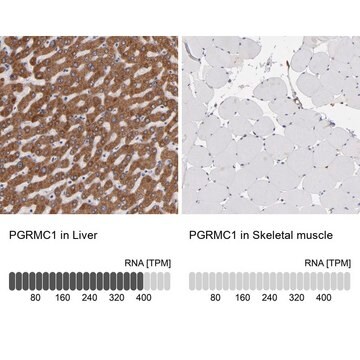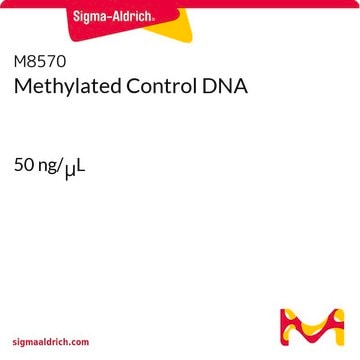935786
Shear-thinning gelatin-based photocrosslinkable bioink

suitable for extrusion-based 3D bioprinting
Synonim(y):
EASYGEL INX
Zaloguj sięWyświetlanie cen organizacyjnych i kontraktowych
About This Item
Kod UNSPSC:
12352201
Polecane produkty
Poziom jakości
Postać
(transparent gel)
lepkość
0.1-1 Pa.s (high shear)
200-2500 Pa.s low (shear)
siła żelu
(Storage modulus after UV crosslinking (kPa) 2-6)
Opis ogólny
The shear-thinning gelatin-based bioink is a extracellular matrix (ECM)- mimicking ink that provides all the benefits of gelatin with the addition of shear thinning behaviour, thereby allowing easy printing at 37°C.
Based on gelatin derived from natural collagen, this bioink has been modified with photocrosslinkable functional groups which enables unpreedneted printing efficiency of a scaffold that resembes the natural ECM and has exptionally high cell viabilities. The shear-thinning gelatin-based bioink combines all the benefits of conventional gelatin or GelMA with the improved printability thanks to its shear thinning behavior. It can be printed at 37°C in the presence or absence of cells, and overcomes the narrow processing range limitations associated with printing conventional GelMA based bioinks. After printing, the material can be photocrosslinked, resunting in a physiologically stable hydrogel.
Processing:
At high shear rates, this bioink exhibits a low viscotiy which allows easy injection from the printing nozzle, At low shear rates, it has a high viscosity, which is required for shape retention after deposition. This is favorable for extrusion-based 3D bioprinters as the ink should easily be injected through the printing nozzle and the post-injetion flow should be minimized to prevent structural deformation. These properties are very rarely seen in conventional gelatin-based ink, giving this bioink an advantage over traditional bioinks.
Based on gelatin derived from natural collagen, this bioink has been modified with photocrosslinkable functional groups which enables unpreedneted printing efficiency of a scaffold that resembes the natural ECM and has exptionally high cell viabilities. The shear-thinning gelatin-based bioink combines all the benefits of conventional gelatin or GelMA with the improved printability thanks to its shear thinning behavior. It can be printed at 37°C in the presence or absence of cells, and overcomes the narrow processing range limitations associated with printing conventional GelMA based bioinks. After printing, the material can be photocrosslinked, resunting in a physiologically stable hydrogel.
Processing:
At high shear rates, this bioink exhibits a low viscotiy which allows easy injection from the printing nozzle, At low shear rates, it has a high viscosity, which is required for shape retention after deposition. This is favorable for extrusion-based 3D bioprinters as the ink should easily be injected through the printing nozzle and the post-injetion flow should be minimized to prevent structural deformation. These properties are very rarely seen in conventional gelatin-based ink, giving this bioink an advantage over traditional bioinks.
Zastosowanie
Applications: :
3D bioprinting
Tissue engineering
In vitro modeling
3D bioprinting
Tissue engineering
In vitro modeling
Cechy i korzyści
Features and Benefits:
- Easy printing - Shear thinning behavior enables easy deposition at 37°C
- Biodegradability - Enables cellular remodeling of the printed matrix
- Easy handling - Delivered in a ready-to-use cartridge - UV curable
- Efficient UV-based crosslinking
- Reproducibility - Strict quality control
Cell interactive - Material is biocompatible mimics natural ECM envrionment
- Easy printing - Shear thinning behavior enables easy deposition at 37°C
- Biodegradability - Enables cellular remodeling of the printed matrix
- Easy handling - Delivered in a ready-to-use cartridge - UV curable
- Efficient UV-based crosslinking
- Reproducibility - Strict quality control
Cell interactive - Material is biocompatible mimics natural ECM envrionment
Kod klasy składowania
10 - Combustible liquids
Klasa zagrożenia wodnego (WGK)
WGK 3
Temperatura zapłonu (°F)
Not applicable
Temperatura zapłonu (°C)
Not applicable
Certyfikaty analizy (CoA)
Poszukaj Certyfikaty analizy (CoA), wpisując numer partii/serii produktów. Numery serii i partii można znaleźć na etykiecie produktu po słowach „seria” lub „partia”.
Masz już ten produkt?
Dokumenty związane z niedawno zakupionymi produktami zostały zamieszczone w Bibliotece dokumentów.
Olivier Guillaume et al.
Acta biomaterialia, 165, 72-85 (2022-03-16)
Since its inception, tissue engineering and regenerative medicine (TERM) has been relying on either scaffold-based or scaffold-free strategies. Recent reports outlined the possibility of a synergistic, convergence approach, referred to as the third TERM strategy, which could alleviate bottlenecks of
Nasz zespół naukowców ma doświadczenie we wszystkich obszarach badań, w tym w naukach przyrodniczych, materiałoznawstwie, syntezie chemicznej, chromatografii, analityce i wielu innych dziedzinach.
Skontaktuj się z zespołem ds. pomocy technicznej








